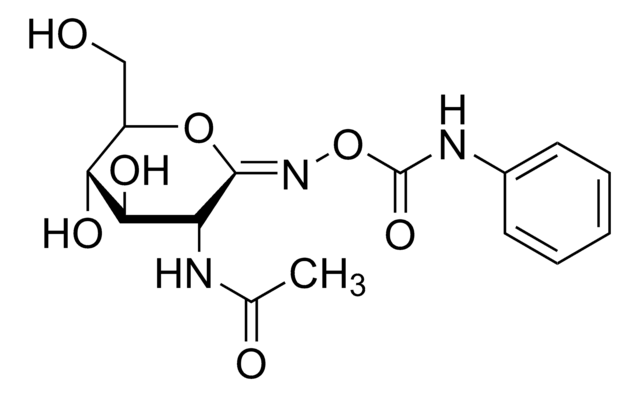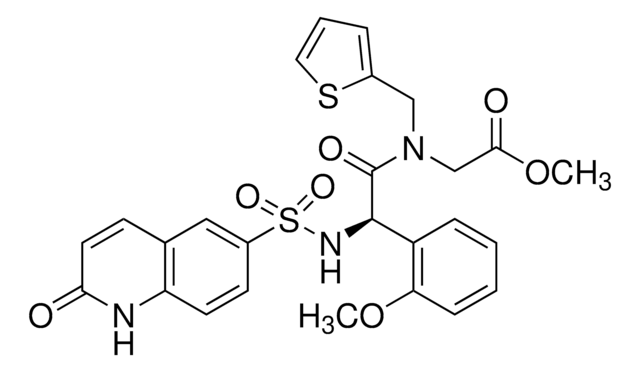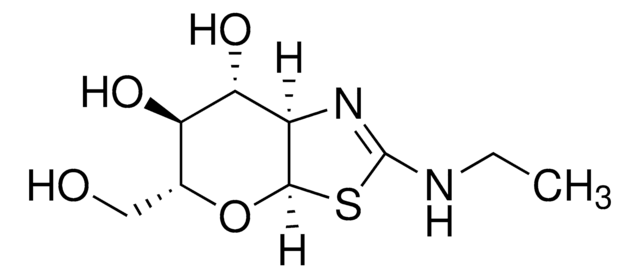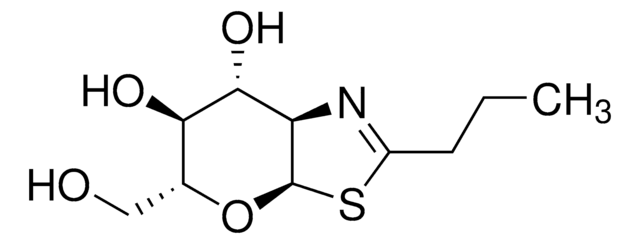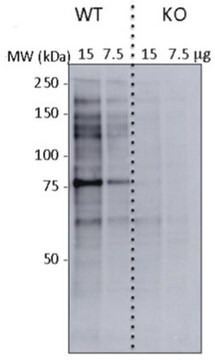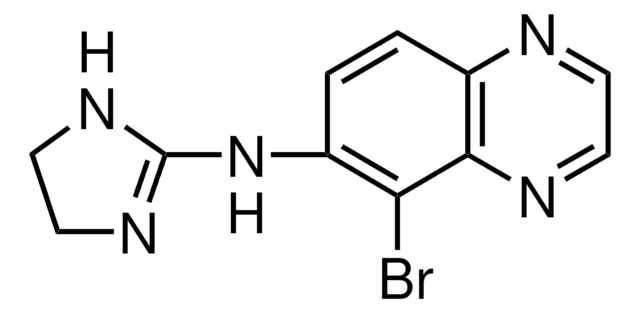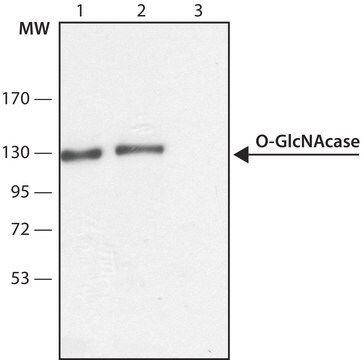SML0244
Thiamet G
≥98% (HPLC)
Sinónimos:
(3aR,5R,6S,7R,7aR)-2-(ethylamino)-3a,6,7,7a-tetrahydro-5-(hydroxymethyl)-5H-Pyrano[3,2-d]thiazole-6,7-diol
About This Item
Productos recomendados
Nivel de calidad
Análisis
≥98% (HPLC)
formulario
powder
actividad óptica
[α]/D -21 to -26°, c = 0.3 in methanol
condiciones de almacenamiento
desiccated
color
white to beige
solubilidad
H2O: ≥5 mg/mL at warmed to 60 °C
temp. de almacenamiento
−20°C
cadena SMILES
CCNC1=N[C@@H]2[C@@H](O)[C@H](O)[C@@H](CO)O[C@@H]2S1
InChI
1S/C9H16N2O4S/c1-2-10-9-11-5-7(14)6(13)4(3-12)15-8(5)16-9/h4-8,12-14H,2-3H2,1H3,(H,10,11)/t4-,5-,6-,7-,8-/m1/s1
Clave InChI
PPAIMZHKIXDJRN-FMDGEEDCSA-N
¿Está buscando productos similares? Visita Guía de comparación de productos
Aplicación
- to treat human embryonic kidney 293 cells in order to study its effect on Wnt/beta-catenin signalling
- to treat lytically-replicating producer
- to incubate mice (C57BL/6) aortic segments to increase global O-GlcNAc levels
Acciones bioquímicas o fisiológicas
Palabra de señalización
Warning
Frases de peligro
Consejos de prudencia
Clasificaciones de peligro
Skin Sens. 1B
Código de clase de almacenamiento
11 - Combustible Solids
Clase de riesgo para el agua (WGK)
WGK 3
Punto de inflamabilidad (°F)
Not applicable
Punto de inflamabilidad (°C)
Not applicable
Certificados de análisis (COA)
Busque Certificados de análisis (COA) introduciendo el número de lote del producto. Los números de lote se encuentran en la etiqueta del producto después de las palabras «Lot» o «Batch»
¿Ya tiene este producto?
Encuentre la documentación para los productos que ha comprado recientemente en la Biblioteca de documentos.
Los clientes también vieron
Nuestro equipo de científicos tiene experiencia en todas las áreas de investigación: Ciencias de la vida, Ciencia de los materiales, Síntesis química, Cromatografía, Analítica y muchas otras.
Póngase en contacto con el Servicio técnico